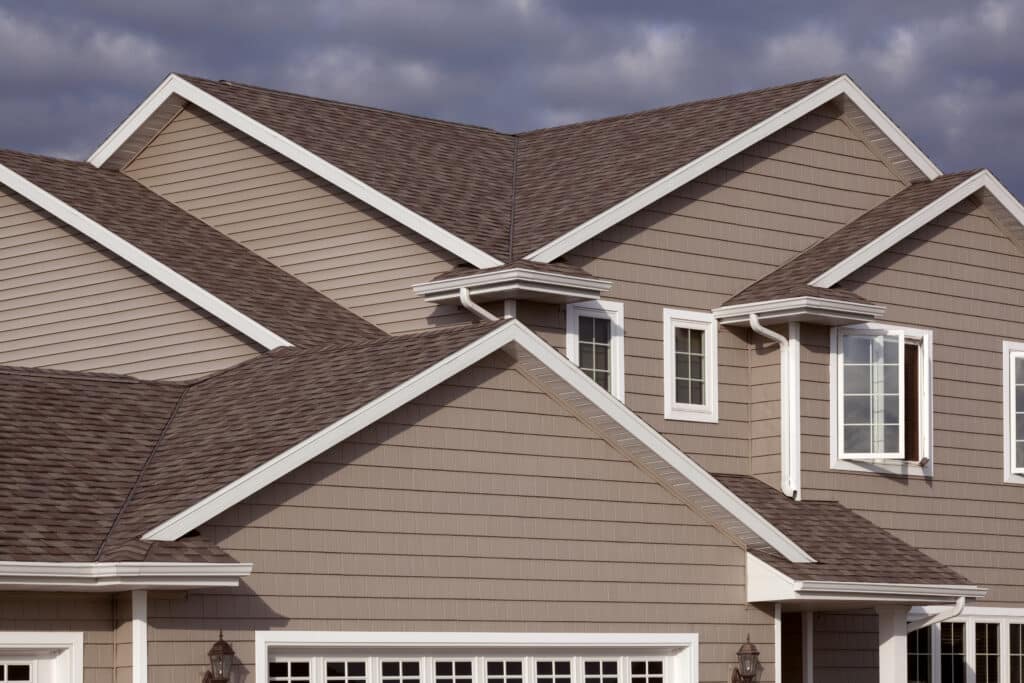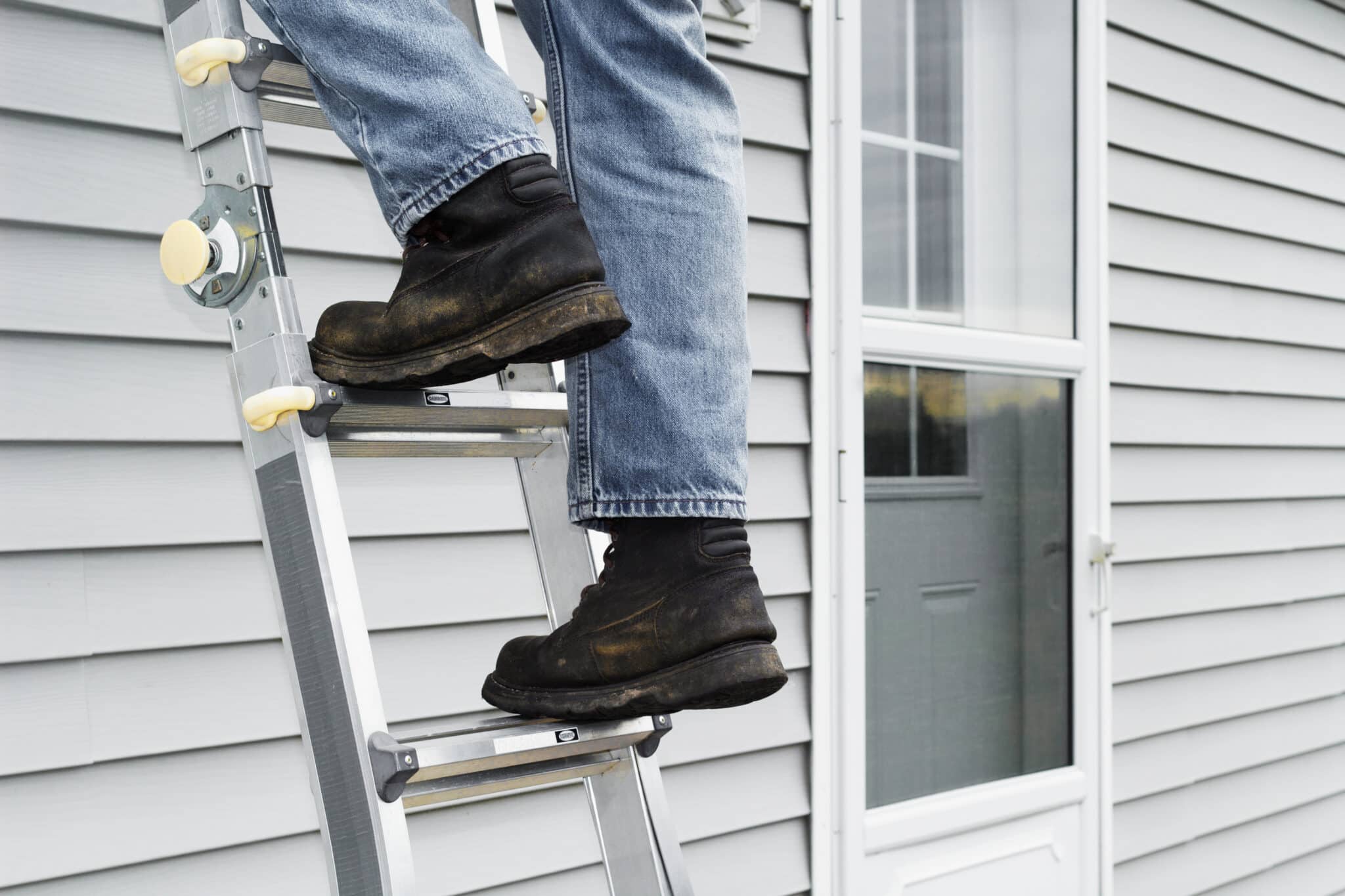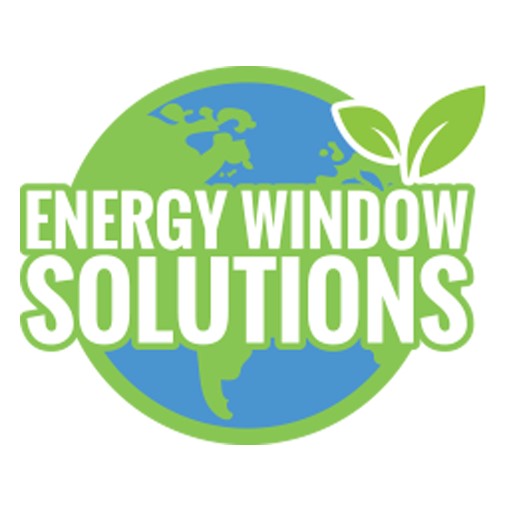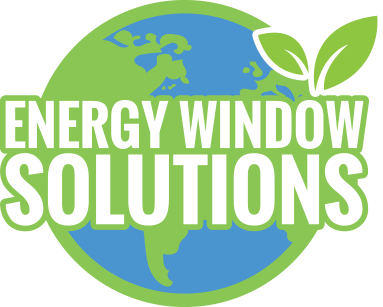
Pros and Cons of Different Vinyl Siding Profiles
Are you considering updating the exterior of your home? Have you thought about the impact that fresh, durable siding can have? Vinyl siding might just be the perfect solution you’re looking for. Known for its versatility, affordability, and low maintenance, it has become a favorite among homeowners and builders alike. In this comprehensive guide, we’ll explore the different types available, their benefits, and how to choose the right one for your home in Fort Worth, TX.
Overview of Vinyl Siding
What is Vinyl Siding?
Have you ever wondered why so many homeowners opt for this type of exterior cladding? Introduced in the late 1950s as a replacement for aluminum, vinyl siding is a plastic material primarily made from PVC (polyvinyl chloride) resin. It serves multiple purposes, such as decorating, weatherproofing, and insulating homes, while offering durability and flexibility.
Benefits of Vinyl Siding
This exterior cladding offers numerous advantages, making it a favored option for many. One of its most significant benefits is cost-effectiveness. Compared to other materials, it is relatively inexpensive in terms of both the material itself and installation costs.
Additionally, it requires minimal maintenance—no need for painting or staining—and is resistant to pests, rot, and weather damage. The wide variety of colors and styles available allows homeowners to achieve the desired look without compromising durability.
Traditional Vinyl Siding
Traditional Siding is the classic option that many homeowners recognize. It’s typically designed to mimic the appearance of wood clapboard and is available in a range of colors and textures. This type of siding is constructed from PVC resin, making it durable and resistant to the elements. Its design includes panels that are installed horizontally, overlapping each other to create a seamless look.
Advantages
- Aesthetic Appeal: Distinctive shadow lines enhance visual interest.
- Durability: Resistant to rot, pests, and weather damage.
- Low-Maintenance: Requires minimal upkeep.
- Easy Installation: Reduces labor costs and installation time.
Disadvantages
- Higher Cost: Slightly more expensive than traditional siding.
- Temperature Sensitivity: This can become brittle in cold temperatures and may warp under extreme heat.
- Maintenance: Shadow lines can accumulate dirt, requiring more frequent cleaning.
Best Use Cases
Traditional vinyl Siding is best suited for a variety of residential applications. It’s an excellent choice for homeowners looking to update their home’s exterior on a budget while still achieving a clean and classic look. It’s particularly effective in climates where extreme weather conditions are less frequent, ensuring long-lasting performance and minimal maintenance.
Dutch Lap Vinyl Siding
Dutch Lap Siding is characterized by its unique profile that includes a beveled edge, giving each panel a more pronounced shadow line. This style is designed to replicate the look of hand-carved wood siding commonly found in colonial-era homes. The overlapping panels provide an additional layer of depth and texture, enhancing the visual appeal of any home exterior.
Advantages
- Aesthetic appeal: Dynamic and visually interesting due to the distinctive shadow lines.
- Durable and low-maintenance: Resistant to rot, pests, and weather damage.
- Easy to install: Reduces labor costs and installation time.
Disadvantages
- Higher cost: Slightly more expensive than traditional siding.
- Temperature sensitivity: Can become brittle in cold temperatures and may warp or buckle under extreme heat.
- Maintenance: Shadow lines can accumulate dirt and debris, requiring more frequent cleaning.
Best Use Cases
Dutch Lap Siding is ideal for homeowners looking to enhance their home’s curb appeal with a detailed and textured look. It suits a variety of architectural styles, especially those with historical or traditional influences. Perfect for new constructions and renovation projects aiming for added visual interest and classic charm.
Beaded Vinyl Siding
Beaded Siding features a distinctive bead at the bottom of each panel, which adds an elegant and refined look to the home exterior. This design mimics the traditional craftsmanship of hand-carved wood siding and provides a smooth, clean finish. The panels are typically installed horizontally, offering a seamless and stylish appearance.
Advantages
- Elegant appearance: The beaded edge adds a touch of sophistication and class.
- Durability: Resistant to weather damage, rot, and pests.
- Low maintenance: Requires little upkeep, retaining its look for years without the need for painting or staining.
Disadvantages
- Cost: Generally more expensive than traditional siding due to its refined design.
- Temperature sensitivity: Like other vinyl products, it can become brittle in cold temperatures and may warp in extreme heat.
- Cleaning: The beaded edge can trap dirt and debris, necessitating more frequent cleaning.
Best Use Cases
Beaded Siding is perfect for homeowners seeking to enhance their home’s exterior with a touch of elegance. It is particularly well-suited for colonial and traditional architectural styles. Ideal for both new builds and renovations, this siding adds a refined aesthetic to any property.
Board and Batten Vinyl Siding
Board and batten Siding features alternating wide boards and narrow battens, creating a vertical pattern that gives homes a rustic and charming appearance. This style is inspired by traditional barn and farmhouse designs, providing a unique look that stands out from horizontal siding options.
Advantages
- Distinctive look: Offers a rustic, charming aesthetic that enhances curb appeal.
- Durability: Resistant to rot, pests, and weather damage.
- Versatility: Works well with various architectural styles, from modern farmhouses to contemporary homes.
Disadvantages
- Installation complexity: Can be more challenging to install compared to other siding styles, potentially increasing labor costs.
- Cost: Generally more expensive than traditional horizontal siding due to its unique design.
- Maintenance: Vertical seams can accumulate dirt and debris, requiring more frequent cleaning.
Best Use Cases
Board and batten Siding is ideal for homeowners looking to achieve a rustic or farmhouse look. It works well for both new constructions and renovation projects, adding a unique and eye-catching element to the home’s exterior. This style is particularly popular for modern farmhouses and homes with a rustic or country aesthetic.
Shake and Shingle Vinyl Siding
Shake and shingle siding replicates the look of traditional cedar shakes and shingles, offering a textured and natural appearance. This type of siding provides a handcrafted look, often with variations in size and shape to mimic the irregularity of natural wood. It is installed in overlapping patterns to create a visually interesting and dynamic exterior.
Advantages
- Authentic look: Mimics the appearance of real cedar shakes and shingles, adding a rustic and handcrafted charm.
- Durability: Resistant to rot, insects, and weather damage.
- Low maintenance: This does not require the regular staining or painting needed for real wood.
Disadvantages
- Cost: Generally more expensive than traditional siding due to its detailed design.
- Installation complexity: Can be more difficult to install, potentially increasing labor costs.
- Temperature sensitivity: Can become brittle in cold temperatures and may warp or buckle under extreme heat.
Best Use Cases
Shake and shingle Siding is ideal for homeowners who want to capture the look of natural wood without the high maintenance. It is perfect for homes with a rustic, coastal, or craftsman style. This siding option works well for accent areas or entire exterior applications, providing a charming and distinctive look for both new constructions and renovations.
Vertical Vinyl Siding
Vertical Siding features panels that are installed vertically rather than horizontally, creating a sleek and modern look. This style is often used to make a home appear taller and more stately. Vertical siding can come in a variety of textures and colors, allowing homeowners to achieve the desired aesthetic.
Advantages
- Modern appearance: Offers a contemporary and clean look that can make homes appear taller.
- Durability: Resistant to rot, pests, and weather damage.
- Easy maintenance: Requires minimal upkeep compared to wood siding.
Disadvantages
- Installation cost: Can be more expensive to install due to the need for more precise alignment and additional trim work.
- Uncommon style: Less traditional than horizontal siding, which may not appeal to all homeowners.
- Maintenance: Vertical seams can trap dirt and moisture, necessitating regular cleaning.
Best Use Cases
Vertical Siding is a great choice for homeowners seeking a modern, sleek exterior. It works well for contemporary homes and can also be used as an accent on traditional homes to add visual interest. This siding style is suitable for both new constructions and renovation projects where a distinctive and modern look is desired.
Insulated Vinyl Siding
Insulated Siding includes a layer of foam insulation attached to the back of the vinyl panel. This insulation improves the energy efficiency of the home by providing an additional barrier to heat transfer. It also enhances the rigidity of the siding, making it more durable and resistant to impacts.
Advantages
- Energy efficiency: Reduces heat transfer, lowers energy bills, and improves indoor comfort.
- Enhanced durability: More resistant to impacts and warping due to the added insulation.
- Noise reduction: The insulation layer helps to dampen external noise.
Disadvantages
- Higher cost: Generally more expensive than non-insulated vinyl siding due to the added insulation.
- Installation complexity: Requires careful installation to ensure the insulation is effective and the siding is properly aligned.
- Potential moisture issues: If not installed correctly, there can be a risk of moisture being trapped behind the insulation.
Best Use Cases
Insulated Siding is ideal for homeowners looking to improve their home’s energy efficiency and reduce their utility bills. It is particularly beneficial in regions with extreme temperatures. This siding is suitable for both new constructions and renovations, offering an upgraded option that combines durability with energy savings.
Foam-Backed Vinyl Siding
Foam-backed Siding is designed with a layer of foam insulation adhered directly to the back of the vinyl panel. This type of siding provides added insulation, improves the structural integrity of the siding, and offers enhanced impact resistance. The foam backing also helps the siding maintain a smooth appearance by filling gaps and irregularities in the wall surface.
Advantages
- Improved insulation: Enhances the home’s energy efficiency by providing an additional thermal barrier.
- Increased durability: More resistant to impacts and dents, making it a long-lasting option.
- Enhanced appearance: Maintains a smoother finish by compensating for wall imperfections.
Disadvantages
- Higher cost: Generally more expensive than traditional siding due to the foam backing.
- Installation complexity: Requires precise installation to ensure the foam backing is effective and the siding is properly aligned.
- Potential moisture issues: If not installed correctly, there can be a risk of moisture being trapped behind the foam.
Best Use Cases
Foam-backed Siding is ideal for homeowners looking to improve both the energy efficiency and aesthetic appeal of their home. It is particularly beneficial in climates with significant temperature variations.
Log Vinyl Siding
Log Siding is designed to mimic the appearance of traditional log cabins. This type of siding features rounded panels that replicate the look of natural logs, providing a rustic and cozy aesthetic without the maintenance challenges associated with real wood. It’s an excellent option for those who want the charm of a log home with the durability and ease of vinyl siding.
Advantages
- Rustic charm: Offers the attractive, cozy look of a log cabin without the high maintenance.
- Durability: Resistant to rot, pests, and weather damage, unlike natural wood.
- Low maintenance: Does not require staining, sealing, or frequent upkeep like real logs.
Disadvantages
- Higher cost: Typically more expensive than traditional siding due to its specialized design.
- Less versatility: The distinctive log cabin look may not suit all architectural styles or neighborhoods.
- Temperature sensitivity: Can become brittle in cold temperatures and may warp in extreme heat.
Best Use Cases
Log Siding is perfect for homeowners seeking to create a rustic, log cabin-style appearance for their home. It works particularly well for vacation homes, mountain retreats, and rural properties. This siding is suitable for both new constructions and renovations, providing a unique and charming aesthetic with minimal maintenance.
Stone-Look Vinyl Siding
Stone-look Siding is designed to replicate the appearance of natural stone, providing a luxurious and sophisticated look for home exteriors. This type of siding offers the aesthetic appeal of real stone without the high cost and heavy weight. It’s available in various styles and colors, allowing homeowners to achieve the desired stone effect.
Advantages
- Luxurious appearance: Mimics the high-end look of natural stone, enhancing curb appeal.
- Durability: Resistant to weather damage, pests, and rot, making it a long-lasting option.
- Cost-effective: Less expensive than real stone, both in terms of material and installation costs.
Disadvantages
- Higher cost: Generally more expensive than traditional vinyl siding due to its premium design.
- Installation complexity: Requires careful installation to ensure a realistic stone appearance.
- Maintenance: Although low-maintenance, it can require occasional cleaning to maintain its look.
Best Use Cases
Stone-look vinyl siding is ideal for homeowners looking to add a touch of luxury and sophistication to their home’s exterior. It works well for both traditional and contemporary architectural styles, offering a versatile option for enhancing curb appeal. This siding is suitable for accent areas, such as entryways and lower portions of walls, as well as for entire exterior applications.
Choosing the Right Vinyl Siding for Your Home
Selecting the perfect siding for your home involves weighing several critical factors. First, consider style and appearance. Choose a style that complements your home’s architecture and enhances its curb appeal, whether it’s the rustic charm of log siding or the modern sleekness of vertical panels.
Durability and maintenance are also key considerations. Some siding styles are more resistant to impacts and weather damage, while others might require more frequent cleaning. If energy efficiency is a priority, look for insulated or foam-backed options that help reduce heating and cooling costs.
Balancing cost with quality is essential when planning your siding project. While budget-friendly options are available, investing in insulated or premium styles may offer better long-term benefits, such as energy savings and enhanced durability.
Your home’s exterior reflects your personal style. Consider how different siding options will look and how they fit with your overall design vision. The right choice can significantly boost your home’s curb appeal and market value.

Installation Process of Vinyl Siding
Steps Involved
Installing vinyl siding begins with preparing the exterior walls by cleaning the surface and repairing any damage. A weather-resistant barrier is then applied to protect the home from moisture. Starter strips and corner posts are installed to guide the alignment of the siding panels. The vinyl panels are attached from the bottom up, ensuring each row overlaps the previous one for a seamless appearance. Trim pieces are added around windows, doors, and other openings to complete the installation.
Professional vs. DIY Installation
Choosing between professional and DIY installation depends on your skill level and the project’s complexity. Professionals offer expertise, speed, and a polished finish, handling unexpected issues effectively. DIY installation can save on labor costs but requires significant time, effort, and a good understanding of the process. Ensure you have the necessary tools and follow manufacturer instructions closely if you opt for DIY.
Timeframe and Costs
The timeframe for installing vinyl siding varies with the project’s size and complexity. Professional installation typically takes a few days to a couple of weeks, while DIY projects may take longer. Professional installation costs range from $2 to $7 per square foot, including materials and labor. DIY costs are lower, mainly covering materials, but the time and effort required may be higher.

Why Choose Energy Windows Solutions for Your Vinyl Siding Needs
Energy Windows Solutions is your top choice for vinyl siding in Fort Worth, TX, and surrounding cities. With our expertise and high-quality materials, we ensure your home looks beautiful and stays protected. Our professional team guarantees exceptional workmanship and seamless installation, enhancing your home’s curb appeal and value.
We prioritize your satisfaction by offering personalized service from consultation to completion. Plus, we provide comprehensive home improvement solutions, including window replacement and energy-efficient upgrades.
Ready to transform your home? Choose Energy Windows Solutions for reliable, stunning, and efficient vinyl siding. Contact us today to get started!
FAQs About Vinyl Siding
How long does it last?
This type of vinyl siding is known for its durability and can last anywhere from 20 to 40 years, depending on the material quality and exposure conditions. Regular maintenance and proper installation can extend its lifespan.
Can it be painted?
Yes, it can be painted, although it’s generally not necessary due to the wide range of colors available. If you choose to paint, use high-quality acrylic paint and ensure the surface is thoroughly cleaned beforehand.
What are the energy efficiency benefits?
Insulated options help reduce energy costs by providing an extra layer of insulation. This can keep your home warmer in the winter and cooler in the summer, leading to lower heating and cooling bills.
How do I clean it?
Cleaning is straightforward. Use a soft cloth or a long-handled, soft-bristle brush and a solution of water and mild detergent. For tougher stains, you can use a mixture of water and vinegar or a specialty cleaner. Rinse thoroughly with a garden hose.
Is it a good investment for my home?
Yes, it is a great investment. It enhances curb appeal, is low maintenance, and can improve your home’s energy efficiency, potentially increasing its market value.
Are you ready to explore siding options for your home in Fort Worth, TX? Contact Energy Windows Solutions today and let us help you make the best choice for your home’s exterior!


